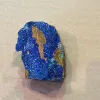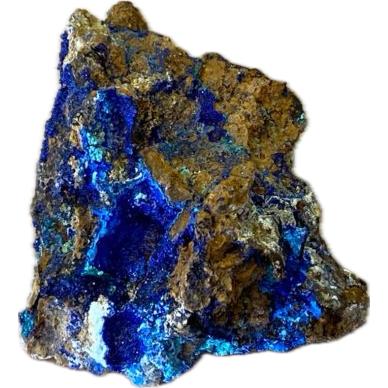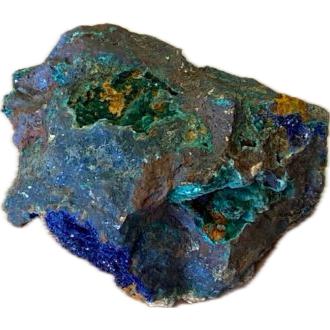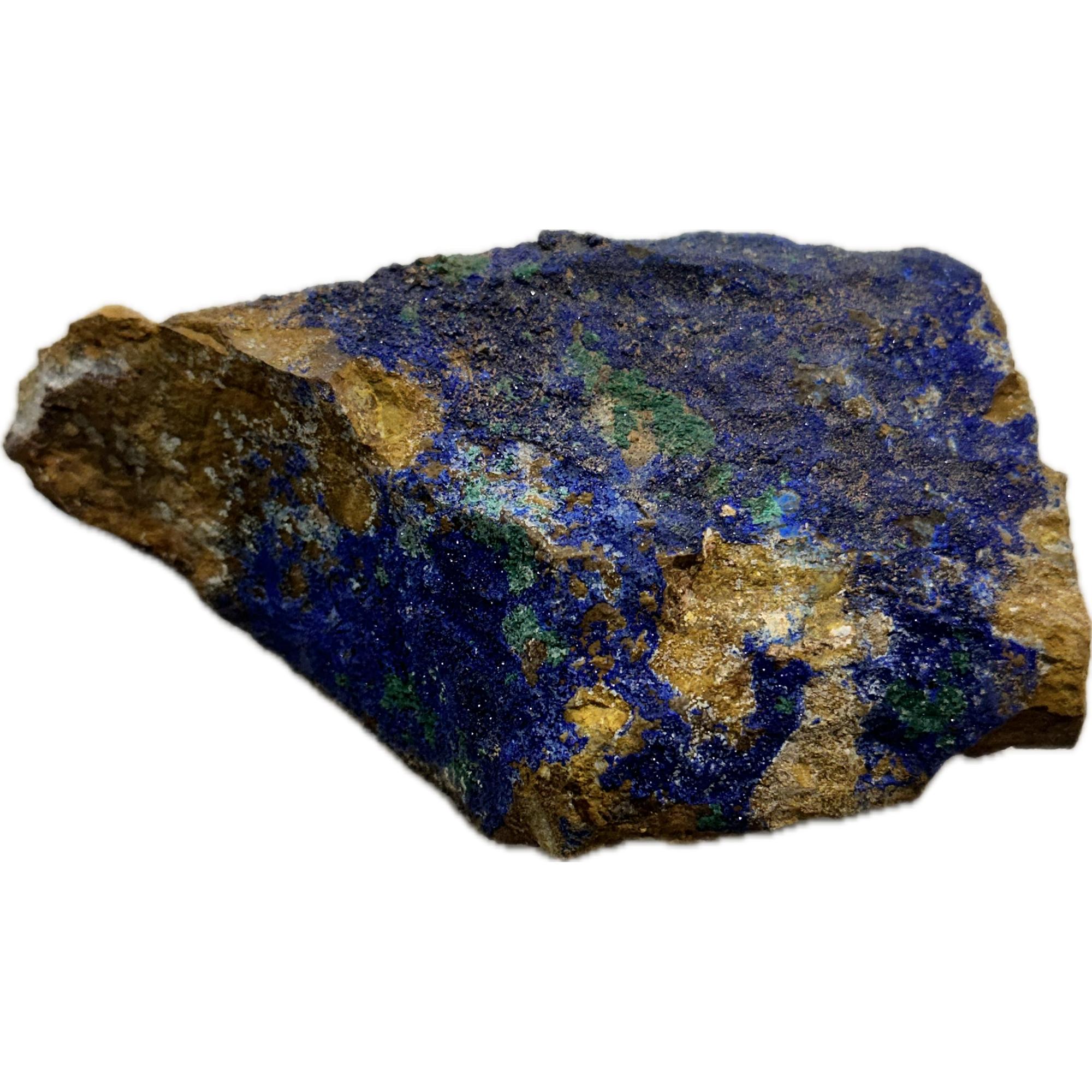Azurite, Malachite, Stone of Transformation
Azurite is a deep blue copper mineral produced by the weathering of copper ore deposits. Its vibrant color and historical significance make it a highly prized mineral among collectors and artists. Chemically, azurite is a basic copper carbonate with the formula Cu₃(CO₃)₂(OH)₂. It often occurs in association with malachite, another copper carbonate mineral, leading to striking green and blue mineral specimens.
Azurite crystallizes in the monoclinic system, typically forming prismatic or tabular crystals, but it can also appear as masses, nodules, or stalactitic formations. The deep azure blue color of azurite is due to the presence of copper ions, which absorb specific wavelengths of light. This distinct coloration has not only made azurite a popular choice for jewelry and ornamental stones but also a valuable pigment throughout history.
Historically, azurite has been used as a pigment in paints and dyes since ancient times. The Egyptians, Greeks, and Romans all utilized ground azurite to create blue pigments for paintings and ceramics. In the Middle Ages and Renaissance, azurite was a primary source of blue in European painting. Artists valued it for its rich, deep color, though it was known to darken and turn green over time as it converted to malachite. This transformation occurs due to azurite’s relative instability and its tendency to absorb water and carbon dioxide from the air, changing its chemical composition.
Azurite deposits are found worldwide, with significant sources located in France, Australia, Chile, and the United States, particularly in Arizona and New Mexico. These deposits are typically found in the oxidized portions of copper ore bodies, where they form through the reaction of carbonated water with copper minerals.
In addition to its aesthetic and historical significance, azurite has played a role in mineralogy and geology. Its presence can indicate the location of copper ore deposits, making it a useful guide for prospectors. Geologists study azurite and its associated minerals to understand the geological processes that lead to the formation of ore deposits.
Azurite’s physical properties include a Mohs hardness of 3.5 to 4, making it relatively soft and suitable for carving and shaping into cabochons and other ornamental items. It has a vitreous to dull luster and a specific gravity of about 3.7 to 3.9. When struck or crushed, azurite produces a light blue streak, which helps in its identification.
Collectors prize azurite specimens not only for their color but also for their crystal habits. Well-formed azurite crystals can be highly sought after, with prices varying based on the size, quality, and origin of the specimen. Some azurite specimens are enhanced by the presence of malachite, creating beautiful green and blue combinations known as azurmalachite. These specimens are particularly valued for their aesthetic appeal and rarity.
Beyond its traditional uses, azurite is also of interest in the field of metaphysics. Some believe that azurite possesses healing properties, enhancing creativity, intuition, and spiritual awareness. It is thought to be a stone that stimulates the third eye chakra, aiding in meditation and the development of psychic abilities. While these beliefs are not scientifically substantiated, they add to the cultural and mystical allure of the mineral.
In modern times, azurite is less commonly used as a pigment due to the availability of more stable and less expensive synthetic alternatives. However, it remains an important subject of study in mineralogy and a cherished item in collections and jewelry.
Prehistoric 101 (Learn about fossils, minerals, and meteorites)
What is Chrysocolla
















